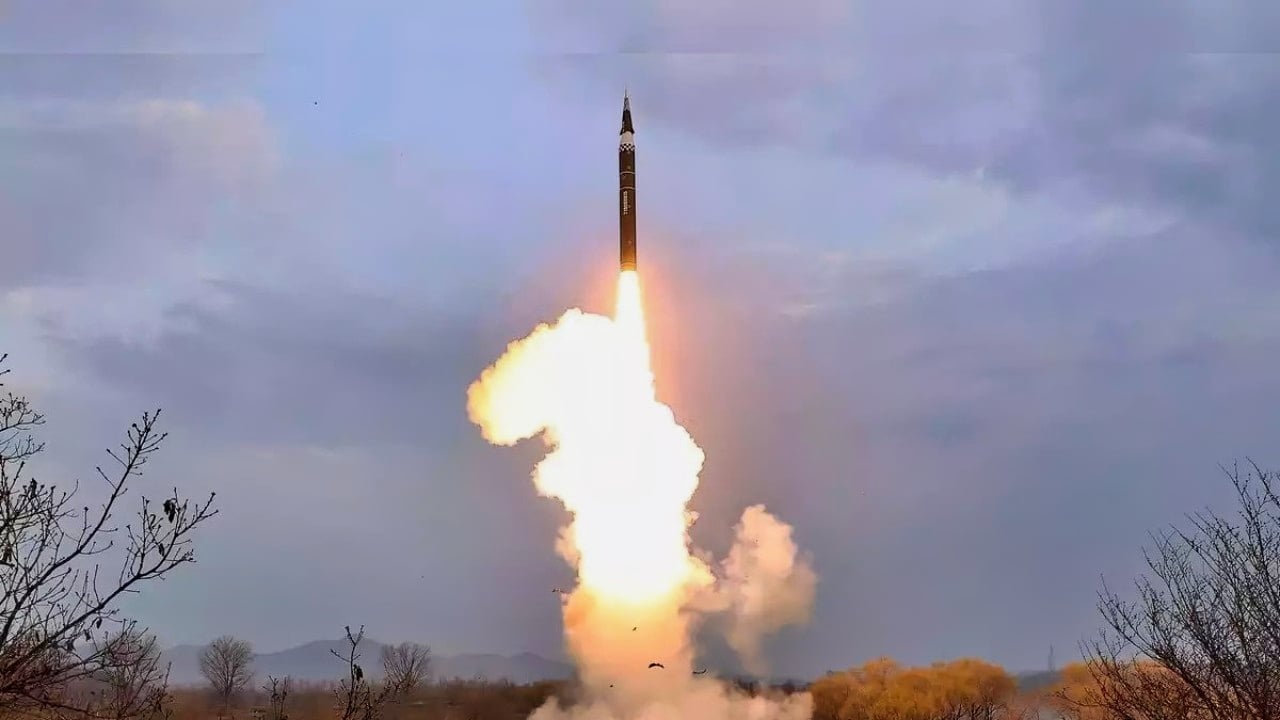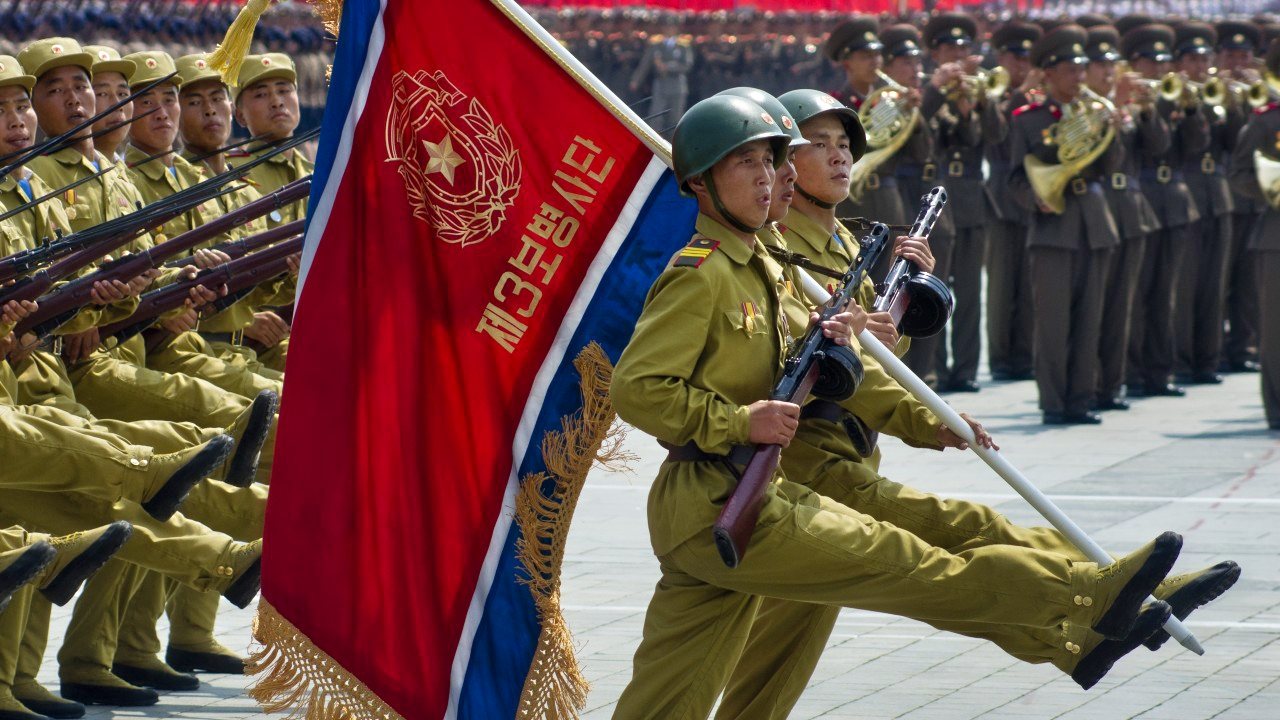Iran's Attack on Israel was Enabled by North Korean Missile Technology and Advances
Iran last month launched a large-scale overnight air strike on Israel. More than 300 drones, cruise missiles, and ballistic missiles targeted the country. North Korean technology was at least partly to blame.
Iran last month launched a large-scale overnight air strike on Israel. More than 300 drones, cruise missiles, and ballistic missiles targeted the country.

While the attack was quite large, it was also ineffective. According to spokespersons for the U.S. and Israeli militaries, 99% of the projectiles launched at Israel failed to make it through.
Israeli and American missile defense worked very effectively, along with support from other allies, including Jordan.
From North Korea to Iran
Israel’s system of ballistic missile defense may be the best in the world. But of the roughly 120 ballistic missiles that Iran used, about 50% either failed to launch or crashed in flight.
Only half of Iran’s ballistic missiles flew the way they were supposed to, thus showing these systems are anything but well made. But where did the Iranians get the technology to assemble these long-range ballistic missile systems, however well or poorly they fared? The answer is, unquestionably, North Korea.
Based on pictures and descriptions from the region, many of the missiles used in the attack were what Tehran calls the Emad. This is a medium-range ballistic missile based on the Shahab-3, which itself is nothing more than a copy of North Korea’s NoDong missile. The Shahab-3 (NoDong) has a range of 1300–1500 kilometers, but the Emad has a reported range of about 1700 km, and its longer reach allows it to target Israel.
The North Koreans conducted a live test of the NoDong for Iran and Pakistan in 1993. Following the test, both Tehran and Islamabad ordered dozens of these missiles and their launchers. Later, at Tehran’s request, North Korea built a fabrication facility for the NoDong – now called the Shahab-3 in Iran. But the Iranians still needed technical support and parts for the missiles they were now indigenously producing.
North Korea’s Contribution
Once the Shahab-3 was integrated into the Iranian ballistic missile force, the Iranians almost immediately began work on a follow-up missile based on the same design, but with a longer range. Thus was born the Emad, which Iran publicly introduced as a new long-range missile in 2015.

Iran claims the Emad has been legitimately tested to a range of 1700 kilometers, and the system shot down near the Dead Sea in Israel probably proves this to be true. Also according to the Iranians, the Emad is significantly more accurate than other missiles in Tehran’s inventory. This, however, has not been proven to be true.
While this system is uniquely Iranian, there can be almost no doubt that the North Koreans provided assistance in extending the missile’s range. But even if they did not, the Emad is little more than a souped-up version of the Shahab-3. Since the Shahab-3 is a copy of the original NoDong missiles North Korea proliferated to Iran, this means that the Iranians carried out their April attack using missiles that could target Israel thanks to assistance from North Korea.
Why is North Korea’s clear contribution to Iran’s capability to attack Israel not receiving more attention? To that question I do not have an answer. We have seen some rather inaccurate analysis on this topic as well. For example, one noted analyst stated he had “seen no evidence of any exchange between North Korea and Iran over missile technology in recent years,” while another said, “I think that North Korea is in a place where they can help them from an accuracy perspective. North Korea itself has significantly increased the accuracy of its ballistic missiles over the past decade and a half.”
These assessments are decidedly incorrect. North Korea in fact has been collaborating with Iran in recent years on a missile rocket booster with 80 tons of thrust. The U.S. Treasury Department sanctioned Iran for this activity in 2016, while ongoing North Korea – Iran cooperation was documented by the UN Panel of Experts in 2021. The Hwasong-15 missile has this capability.
There are two key concerns here. First, the proliferation risk remains high, because no sanctions have been imposed and no actions taken that have significantly slowed North Korea’s military proliferation of anything. We have seen North Korean rockets, artillery, and ballistic missiles used by the Russians. Anti-tank weapons, rockets, and tunnel-building capabilities passed along by Pyongyang have been utilized by Hamas in the past six months. Now, we see North Korean ballistic missile technology and capabilities put to use by Iran to target Israel.

The second concern is that Iran could upgrade its systems. Pyongyang has tested a solid-fuel intermediate-range ballistic missile in recent months. Further, not only do the North Koreans have a very accurate copycat version of the Russian Iskander, but they have now proliferated dozens of these systems to the Russians themselves for use against Ukraine. The Iskander is a short-range ballistic missile, so Iranian forces would need to get much closer to Israel in order to launch one – or get one of their proxies to use it. These and other possible upgrades to Iran’s ballistic missile forces would greatly amplify the threat from Tehran. As noted Israeli missile expert Tal Inbar says, “If you see it in North Korea today, you will see it in Iran tomorrow.”
North Korea has sold systems to Iran since the 1980s. This has not stopped, nor is it likely to change. Without sharp, decisive action against North Korean support to Iran and its proxies, we are likely to see more examples of North Korean proliferation to Iran in the future.
About the Author
Dr. Bruce E. Bechtol Jr. is a professor of Political Science at Angelo State University. He is also the president of the International Council on Korean Studies and a fellow at the Institute for Corean-American Studies. The author of five books dealing with North Korea, his latest work is entitled North Korean Military Proliferation in the Middle East and Africa.
All images are from KCNA/North Korean State Media.


